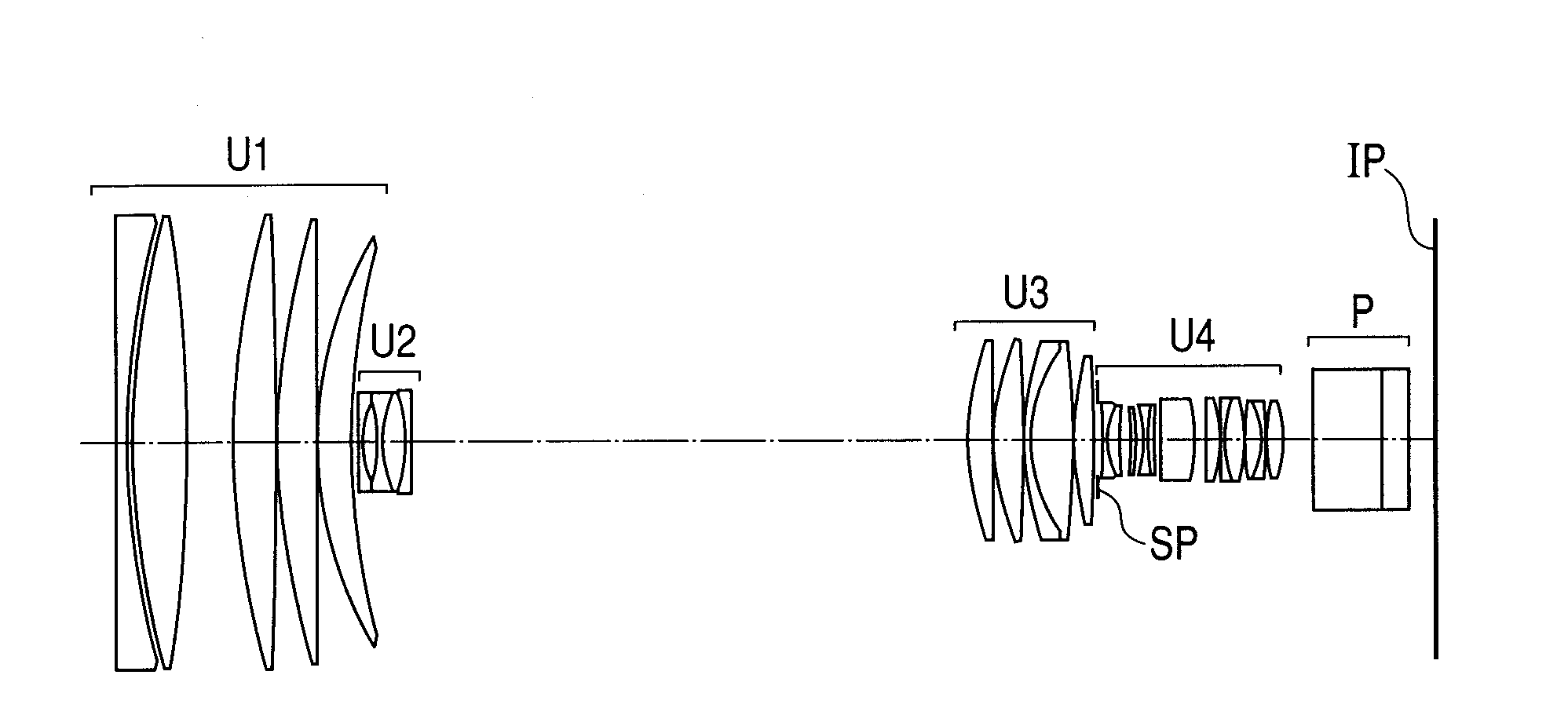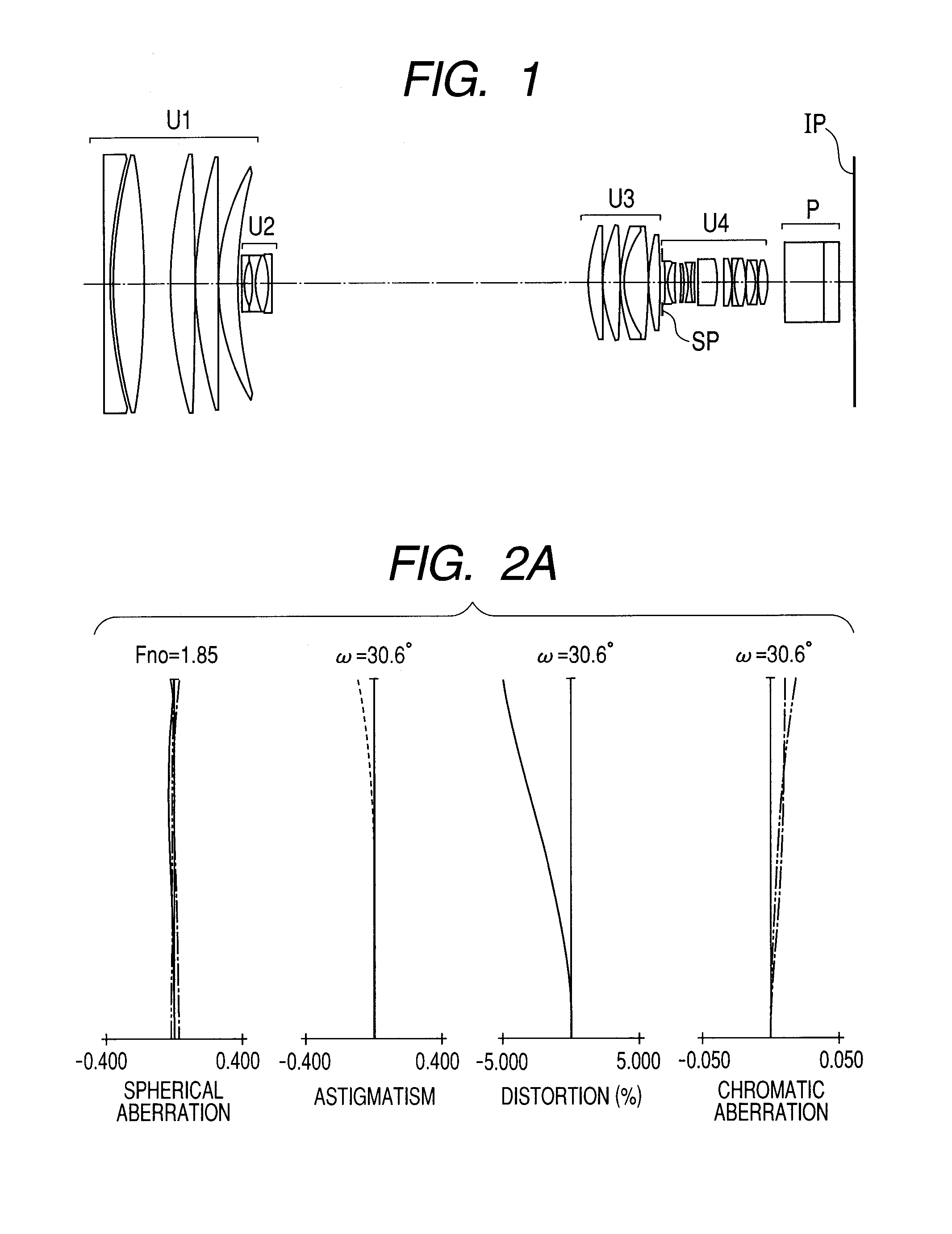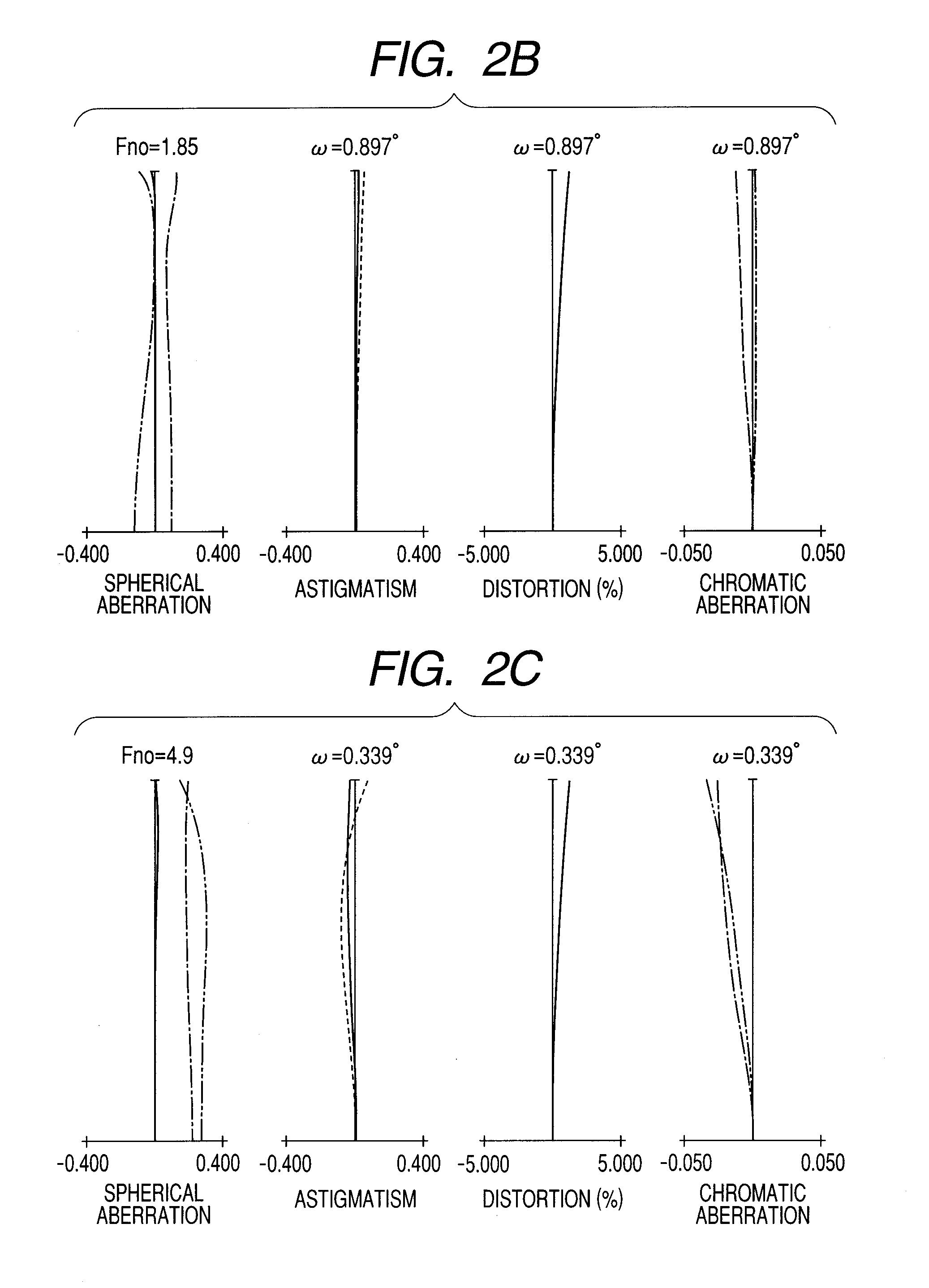Zoom lens system and image pickup apparatus including the same
- Summary
- Abstract
- Description
- Claims
- Application Information
AI Technical Summary
Benefits of technology
Problems solved by technology
Method used
Image
Examples
embodiment 1
[0084]The structure of the third lens unit U3 according to Embodiment 1 is described. In Numerical Embodiment 1, lenses included in the third lens unit U3 correspond to the eighteenth surface to the twenty-sixth surface. The third lens unit U3 includes a biconvex positive lens G1, a biconvex positive lens G2, a negative meniscus lens G3 having a convex surface facing toward the object, a biconvex positive lens G4, and a biconvex positive lens G5, which are provided in the stated order from the object side to the image side. An image side surface of the positive lens G1 has an aspherical shape. An object side surface of the positive lens G5 has an aspherical shape. The negative lens G3 and the positive lens G4 are cemented to each other. The positive lens G2 corresponds to the positive lens G3p1, and satisfies Conditional Expressions (8), (9), (10), and (11). Each of the positive lenses G1 and G5 corresponds to the positive lens G3p2, and satisfies Conditional Expressions (12), (13),...
embodiment 2
[0102]In Embodiment 2, the respective lenses of the lens structure including the first lens unit U1 to the fourth lens unit U4 have the same shapes (including aspherical shape) as in Embodiment 1. The same effects as in Embodiment 1 are obtained. The positive lens G2 (corresponding to positive lens G3p1) satisfies Conditional Expressions (8), (9), (10), and (11). Each of the positive lenses G1 and G5 (corresponding to positive lens G3p2) satisfies Conditional Expressions (12), (13), (14), and (15). The negative lens G3 satisfies Conditional Expressions (16), (17), (18), and (19).
[0103]In this embodiment, the mass W2 of the second lens unit U2 and the mass W3 of the third lens unit U3 are calculated based on maximum effective diameter values of the respective lenses and obtained as follows.
[0104]W2=133 (g)
[0105]W3=655 (g)
[0106]Further, the following values are provided.
[0107]ea2=44.113
[0108]ea3=85.427
[0109]bd2=25.925
[0110]bd3=59.725
[0111]Therefore, the coefficient C in Expression (33...
embodiment 3
[0119]In Embodiment 3, the respective lenses of the lens structure including the first lens unit U1 to the fourth lens unit U4 have the same shapes (including aspherical shape) as in Embodiment 1. The same effects as in Embodiment 1 are obtained. The positive lens G2 (corresponding to positive lens G3p1) satisfies Conditional Expressions (8), (9), (10), and (11). Each of the positive lenses G1 and G5 (corresponding to positive lens G3p2) satisfies Conditional Expressions (12), (13), (14), and (15). The negative lens G3 satisfies Conditional Expressions (16), (17), (18), and (19).
[0120]In this embodiment, the mass W2 of the second lens unit U2 and the mass W3 of the third lens unit U3 are calculated based on maximum effective diameter values of the respective lenses and obtained as follows.
[0121]W2=136 (g)
[0122]W3=686 (g)
[0123]Further, the following values are provided.
[0124]ea2=44.607
[0125]ea3=88.625
[0126]bd2=26.428
[0127]bd3=57.188
[0128]Therefore, the coefficient C in Expression (33...
PUM
 Login to View More
Login to View More Abstract
Description
Claims
Application Information
 Login to View More
Login to View More - R&D
- Intellectual Property
- Life Sciences
- Materials
- Tech Scout
- Unparalleled Data Quality
- Higher Quality Content
- 60% Fewer Hallucinations
Browse by: Latest US Patents, China's latest patents, Technical Efficacy Thesaurus, Application Domain, Technology Topic, Popular Technical Reports.
© 2025 PatSnap. All rights reserved.Legal|Privacy policy|Modern Slavery Act Transparency Statement|Sitemap|About US| Contact US: help@patsnap.com



